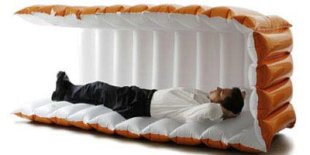NEW YORK (Reuters) - Sniffles, runny
noses and flu-like symptoms can deter, delay and even derail many
exercisers just when enthusiasm for that New Year's resolution is
beginning to flag.
Health and fitness experts advise to starve a fever of
exercise. But feeding a cold moderately, with a brisk walk, may not be a
bad idea.
"The classic line from every sports medicine doctor is, 'If you can do it, do it. If you can't, don't,'" said Dr. Lewis G. Maharam, author of "Running Doc's Guide to Healthy Running."
Usually if symptoms are confined to above the neck,
exercising is OK, he explained. But if you're running a fever of 101
degrees Fahrenheit (38.3 degrees Celsius) or higher, skip it.
Body heat rises during exercise due to increased metabolism, explained Maharam, who practices medicine in New York City. If you start high, your body's way of cooling you down is out of balance.
"If fever gets too high, you break down proteins, maybe in the kidneys or liver," he said.
The U.S. Centers for Disease Control and Prevention estimates
that more than 425 million case of colds and flu occur annually in the
United States. The average person has about three respiratory infections
per year.
Dr. David C. Nieman, a professor of health sciences at Appalachian State University, North Carolina Research Campus, said research shows that regular, moderate aerobic exercise strengthens the immune system, and that people who exercise report fewer colds than their inactive peers.
Nieman said five days or more of aerobic activity per
week was found to be a powerful factor in lowering the number of sick
days.

 There was a time when we were awakened by the divine chirping of the birds and the first glow of the morning sun, and with the advent of technology it was soon substituted by Alarm Clocks.
There was a time when we were awakened by the divine chirping of the birds and the first glow of the morning sun, and with the advent of technology it was soon substituted by Alarm Clocks.
 Mobile phones equipped with a camera have been the biggest boon for one and all, yet wielding the camera the right way to get a good image is practically impossible.
Mobile phones equipped with a camera have been the biggest boon for one and all, yet wielding the camera the right way to get a good image is practically impossible.


 If you work in the field of marketing, you need to keep yourself up-to-date with the various platforms that exist, in the realm of social media.
If you work in the field of marketing, you need to keep yourself up-to-date with the various platforms that exist, in the realm of social media.
















 Researchers have found in recent years that the human body requires only as much sleep as the brain will allow it.
Researchers have found in recent years that the human body requires only as much sleep as the brain will allow it. 






















